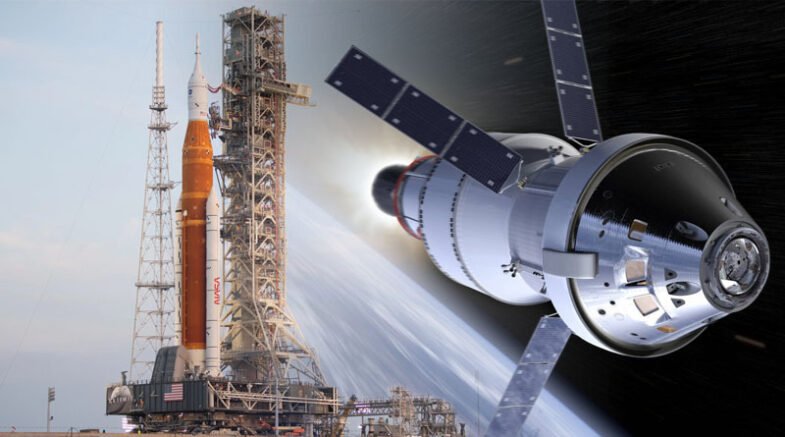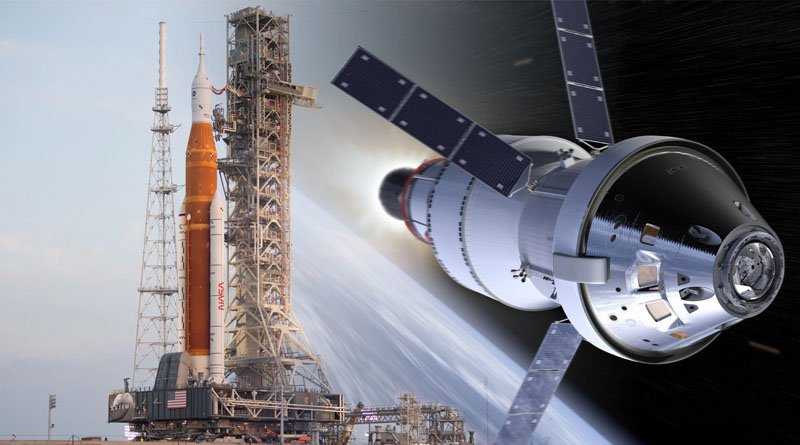“We need to make sure that everything we’re doing, we understand the risks that we’re taking, we understand the performance of this vehicle moving forward,” said Jim Free.

Three months after NASA’s new moon Spacecraft returned to Earth, the US space agency is calling the Artemis I mission a success and gearing up for the next launch as early as November 2024.
But as engineers pore over terabytes of data from that maiden voyage, they’ve uncovered crucial hardware problems that will warrant further scrutiny before they can safely put humans into orbit on the next launch.
Those issues include significant damage to the mobile launcher — the Space Launch System rocket’s platform — and the Orion spacecraft’s protective heat shield.
“We have heartbeats on this mission,” said Jim Free, NASA‘s associate administrator of exploration systems development, to reporters on Tuesday. “We need to make sure that everything we’re doing, we understand the risks that we’re taking, we understand the performance of this vehicle moving forward.”
NASA launched the Artemis I mission on Nov. 16, 2022 — its first deep space flight of a capsule built to carry astronauts in a half-century. The Orion spacecraft was sent more than a quarter-million miles from Earth, including a 40,000-mile swing past the moon, on a whirling 25.5-day journey to test various orbits. When it splashed down in the Pacific Ocean off the Baja California peninsula of Mexico on Dec. 11, 2022, the U.S. space agency said it had put 1.4 million miles on the odometer.
No one was inside Orion, but the uncrewed test flight sets the stage for up to four astronauts aboard the spacecraft next time for Artemis II. Through the moon-to-Mars program, NASA wants to one day build a lunar-orbiting moon base, see the first woman and person of color walk on the moon, and spend long stretches conducting research and collecting samples on its surface, all while keeping one eye fixed on the red planet some 100 million miles in the distance.
“We have heartbeats on this mission. We need to make sure that everything we’re doing, we understand the risks that we’re taking, we understand the performance of this vehicle moving forward.”
The primary objectives of the inaugural flight were getting the moon spacecraft of US to orbit and recovering it. But another major purpose was to see how Orion’s heat shield stood up to the punishing temperatures as the spacecraft plummeted through Earth’s atmosphere. Orion came home faster and hotter than any spacecraft prior, traveling at 24,500 mph in 5,000 degree Fahrenheit temperatures.
The heat shield was supposed to get a little barbecued, but not charred to the extent that the team has observed in its post-flight analysis, said Howard Hu, manager of Orion, at the press conference.
“We’re seeing larger, like, more little pieces that are coming off versus being ablated,” he said, referring to a type of heat-driven evaporation engineers expected. The team has not determined yet whether the material needs to be redesigned, he said.
NASA said the mobile launcher for its mega moon rocket sustained unexpected damage during the Artemis I liftoff.
Ground teams are also looking closely at the mobile launcher, which took a beating from the rocket’s fiery blast and 8.8 million pounds of thrust. The gaseous nitrogen supply lines were corroded, some cabinets and control panels were damaged, and the elevator tower was destroyed, said Shawn Quinn, exploration ground systems program manager. One of the two elevators is already back in service, he said, and other repairs have begun.
“It’ll be ready for Artemis II,” he said. “You got to remember, SLS is the largest rocket ever launched. It’s very powerful.” “It’ll be ready for Artemis II.”
Still, teams have a lot more data to review before they can finish their assessment on whether Artemis II will be safe for crew. NASA officials said they’ve recovered the three test dummies outfitted with sensors from the spacecraft — Commander Moonikin Campos, Helga, and Zohar — but they did not yet have any information to share about them.
The findings come 1.5 months after a NASA panel raised concerns about the agency’s safety culture, stating that it “may have diminished, leaving NASA vulnerable to the same flaws that contributed to previous failures.” The group pointed to an issue that arose during the second launch attempt on Sept. 3, 2022, during which a liquid hydrogen line was manually over pressurized, causing a large hydrogen leak. That human error ultimately led to the launch’s scrub.
The panel said the way the problem was communicated to the launch director was not consistent with NASA’s standards for avoiding “organizational silence,” according to the latest report of the Aerospace Safety Advisory Panel, released in January.
Mission leaders said Tuesday the team immediately updated rocket-fueling procedures, automating some steps that were previously controlled by staff, and made time for the team to get acquainted with the new protocols.
“From my perspective, those (issues) were addressed,” Free told Mashable during the teleconference. “I won’t say they’re behind us because we always have humans in the system. But, as someone said, we’re going to make mistakes. Let’s just not make the same mistakes.”
Originally published at MSN
